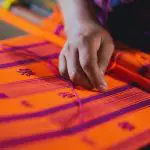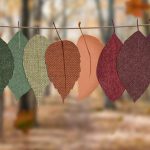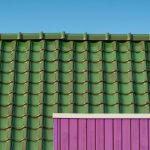Wondering if it's feasible to Mod Podge fabric onto wood?
Let's dive in and discover how to accomplish this creative feat.
You'll need a few essential materials and some straightforward steps to achieve a polished result.
By the end, you'll be equipped with the know-how to seamlessly adhere fabric to wood using Mod Podge.
Let's get started!
Key Takeaways
- Clean and sand the wood surface before applying Mod Podge to ensure smoothness and adhesion.
- Choose lightweight fabrics like cotton or linen for easier application.
- Apply multiple thin layers of Mod Podge, allowing each layer to dry completely for a strong, protective barrier.
- Use different sealing techniques such as polyurethane sealant, matte sealer, antique or vintage wax, or clear acrylic sealer to achieve different finishes and enhance the overall appearance.
Materials Needed
You'll need fabric, wood, Mod Podge, a foam brush, scissors, and a sanding block with fine-grit sandpaper. When it comes to fabric selection, opt for lightweight fabrics like cotton or linen for easier application. Avoid heavy or stretchy fabrics as they can be challenging to work with. Consider the pattern and color of the fabric, ensuring it complements the wood and the overall aesthetic you desire.
Now, let's talk about wood preparation. Start by ensuring the wood surface is clean and smooth. If the wood has any rough patches or splinters, use the sanding block with fine-grit sandpaper to gently sand the surface until it's smooth to the touch. This step is crucial as it allows the Mod Podge to adhere better to the wood. Additionally, consider painting the wood with a base coat of white paint before applying the fabric if you want the colors of the fabric to stand out vividly.
With the right fabric and properly prepared wood, you're all set to begin the process of Mod Podging fabric to wood.
Preparing the Wood Surface
Before you start Mod Podging fabric to wood, it's essential to prepare the surface properly.
Start by sanding the wood to achieve a smooth and even texture, ensuring a better adherence of the fabric.
Then, thoroughly clean the wood to remove any dust or debris that could interfere with the Mod Podge application.
Sanding for Smoothness
To achieve a smooth surface for mod podging fabric to wood, start by sanding the wood thoroughly. Use sandpaper with a fine grit, around 120 to 220, to smooth out any rough patches and ensure an even surface. Sand in the direction of the wood grain to prevent any scratches or damage. Be meticulous in your sanding, paying extra attention to the edges and corners where fabric adhesion is crucial.
After sanding, wipe the wood with a damp cloth to remove any dust or debris. This step is essential for creating a proper surface for the fabric to adhere to.
Taking the time to prepare the wood through proper sanding techniques will result in a flawless finish when mod podging fabric to wood.
Cleaning for Debris Removal
Clean the wood surface thoroughly to remove any debris or dust particles before applying the fabric with Mod Podge. Debris removal is crucial for proper surface preparation, ensuring the fabric adheres smoothly to the wood.
Start by wiping the wood surface with a clean, dry cloth to eliminate loose particles. For more stubborn debris, use a slightly damp cloth to gently wipe the surface. Allow the wood to dry completely before proceeding.
Additionally, consider using a small vacuum attachment or a soft-bristled brush to remove any lingering dust from crevices or corners.
Priming for Adhesion
First, thoroughly inspect the wood surface for any imperfections or rough areas that may impede proper adhesion of the fabric when using Mod Podge. It's crucial to ensure a smooth and clean surface for the best results. Consider the following priming techniques and adhesion factors:
- Sand the wood surface lightly to create a smooth texture.
- Use a tack cloth to remove any dust or debris after sanding.
- Apply a wood primer to enhance adhesion and create a suitable base for the Mod Podge and fabric.
- Allow the primer to dry completely before proceeding with the Mod Podge application.
- Ensure the wood surface is free from any moisture or oils that could affect the adhesion of the fabric.
Applying Mod Podge to Fabric
You'll need to apply a thin layer of Mod Podge to the fabric using a foam brush. Make sure the fabric is clean and dry before starting. This step is crucial for ensuring good adhesion between the fabric and the wood surface. The Mod Podge will act as a sealant and adhesive, effectively bonding the fabric to the wood.
When applying the Mod Podge, be sure to spread it evenly over the entire fabric surface. Pay special attention to the edges to prevent any lifting or peeling later on.
To achieve the best results, allow the Mod Podge to dry completely before moving on to the next step. This usually takes around 15-20 minutes, but it's essential to follow the manufacturer's instructions for the specific type of Mod Podge you're using.
Once dry, the fabric will be ready to be applied to the wood surface. The Mod Podge creates a strong bond, ensuring that the fabric stays securely in place.
Following these steps will help you achieve a professional and durable finish when Mod Podging fabric to wood.
Adhering Fabric to Wood
So, you've mastered applying Mod Podge to fabric, and now you're ready to tackle adhering fabric to wood.
To do this successfully, you'll need to consider the best Mod Podge application techniques and choose a suitable fabric that will adhere well to the wood surface.
Let's explore these key points to ensure your fabric-to-wood project turns out beautifully.
Mod Podge Application Techniques
Adhere fabric to wood using Mod Podge by applying a smooth, even layer of the adhesive to the wood surface before carefully pressing the fabric into place. To ensure a successful outcome, follow these application techniques:
- Brush Selection: Use a high-quality brush with soft bristles to apply the Mod Podge evenly.
- Smooth Application: Apply the Mod Podge in thin, even strokes to prevent clumping and ensure proper adhesion.
- Fabric Stretch: Gently stretch the fabric over the wood surface to avoid wrinkles and air bubbles.
- Seal Edges: Apply an extra layer of Mod Podge around the edges of the fabric to secure it firmly to the wood.
- Drying Time: Allow sufficient drying time for the Mod Podge to set and seal the fabric completely.
Choosing Suitable Fabric
To ensure successful adherence of fabric to wood using Mod Podge, there are several factors to consider.
First, it's important to select a fabric that's lightweight and has a tight weave. Choosing a lightweight fabric ensures that it adheres well to the wood surface without creating lumps or uneven textures. Fabrics with a tight weave provide a smooth and even surface for the Mod Podge application, reducing the likelihood of air bubbles and wrinkles.
When selecting patterns, it's recommended to opt for smaller prints or solid colors. These types of patterns are generally easier to work with and provide a more polished finish.
Consider the durability of the fabric as well, especially if the wood item will be frequently used or handled. A durable fabric will ensure that the Mod Podge adheres securely and withstands wear and tear over time.
Finishing Touches and Sealing
After you have applied the fabric to the wood using Mod Podge, it's important to regularly and lightly sand the surface to ensure a smooth finish. This will help to eliminate any rough edges or bumps, resulting in a professional-looking outcome.
Once the sanding is complete, there are several finishing touches and sealing techniques you can use to protect and enhance your project:
- Seal the fabric with an additional layer of Mod Podge to ensure durability.
- Apply a clear acrylic sealer to protect the fabric from moisture and wear.
- Consider using a polyurethane sealant for added protection and a glossy finish.
- If you want a matte finish, opt for a matte sealer to maintain the fabric's natural texture.
- To give your project a vintage look, try using an antique or vintage wax to seal and protect the fabric.
These finishing touches and sealing techniques won't only protect the fabric but also enhance the overall appearance of your Mod Podge fabric to wood project.
Tips for Long-lasting Results
To ensure long-lasting results when mod podging fabric to wood, there are several steps you need to follow.
First, lightly sand the wood surface to create a better bond.
Next, make sure the fabric is clean, dry, and wrinkle-free before applying Mod Podge.
Smooth out any wrinkles or creases to ensure a flat, even application.
When applying the Mod Podge, use adhesion techniques such as gently pressing out any air bubbles or wrinkles that may form.
For long-term durability, it's recommended to apply multiple thin layers of Mod Podge, allowing each layer to dry completely before adding the next.
This will create a strong, protective barrier over the fabric, safeguarding it from wear and tear.
Additionally, consider using a clear acrylic sealer to provide extra protection against moisture and UV damage.
To maintain the mod podged fabric, periodically clean the surface with a damp cloth and avoid using harsh chemicals or abrasive cleaners.
Frequently Asked Questions
Can Mod Podge Be Used on Outdoor Wooden Surfaces?
Yes, you can use Mod Podge on outdoor wooden surfaces. To ensure the best results, it's essential to properly prepare the fabric before applying Mod Podge. Clean the surface and use outdoor Mod Podge for durability.
Is It Necessary to Wash and Dry Fabric Before Applying Mod Podge?
Before using Mod Podge on fabric, prepping it is key. Washing and drying the fabric beforehand ensures proper application. This step helps remove any sizing or finishes that could interfere with the Mod Podge adhering to the fabric.
Can Mod Podge Be Used to Adhere Delicate or Sheer Fabrics to Wood?
When adhering silk or other delicate fabrics to wood, choosing suitable fabrics is crucial. Mod Podge can be used to attach them, ensuring a smooth and secure bond. It's essential to apply a thin, even layer for best results.
How Long Should Mod Podge Fabric to Wood Projects Dry Before Handling or Displaying?
Once your Mod Podge fabric to wood project is complete, allow it to dry for at least 24 hours before handling or displaying. This ensures proper fabric adhesion and prevents any smudges or damage during the drying process.
Can Mod Podge Be Used to Seal Fabric on Wood for Items That Will Be Used Frequently, Such as Coasters or Table Surfaces?
Yes, you can use Mod Podge to seal fabric on wood for durable fabric adhesion and wood protection. It offers design options and waterproofing properties, making it suitable for items like coasters or table surfaces.
- How Does Ring Spun Cotton Affect Garment Fit and Shape Retention? - August 13, 2024
- What Are the Challenges in Producing Ring Spun Cotton? - August 13, 2024
- Is Ring Spun Cotton Suitable for Plus-Size Clothing? - August 13, 2024







